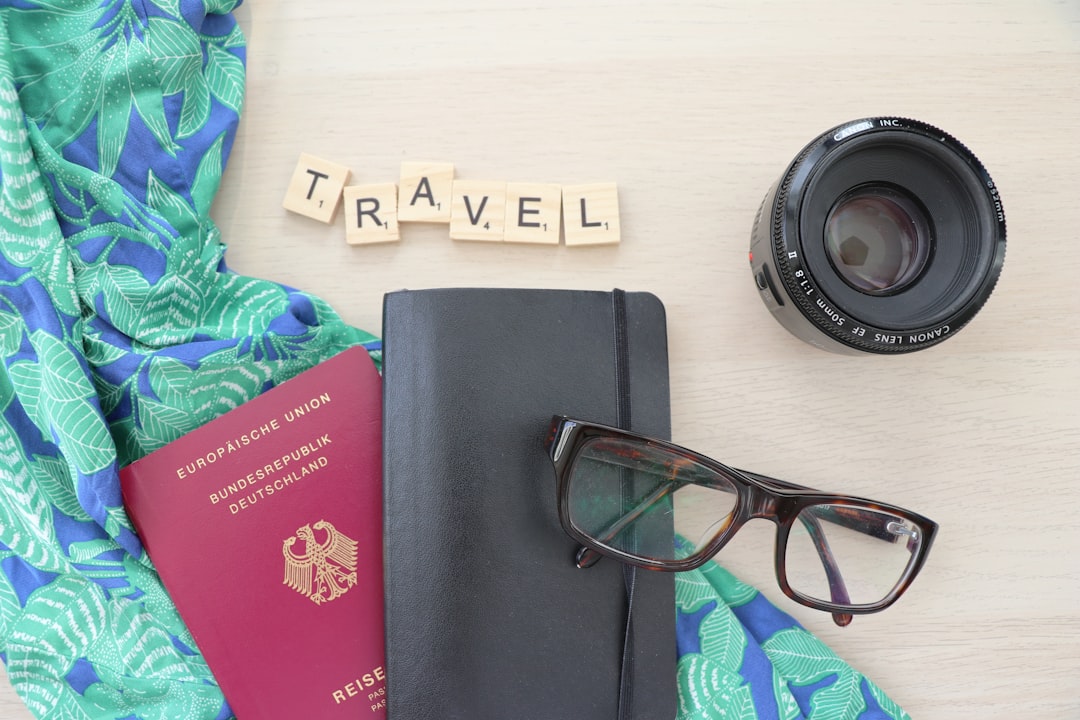Practical Tips for Organizing Gear on the Move

Introduction
Living a nomadic life means your home is wherever you set down your backpack, suitcase, or van. The ability to move quickly, adapt to new environments, and keep your belongings safe and accessible is the difference between a smooth adventure and a constant source of stress. This guide walks you through practical strategies for organizing gear while on the move. It covers everything from assessing your lifestyle and choosing the right packing system to maintaining digital files and handling laundry on the road. By the end you will have a clear roadmap for keeping your belongings tidy, lightweight, and ready for the next destination.
Assess Your Lifestyle
Before you can create an efficient packing system you need to understand how you travel. Ask yourself the following questions and write down the answers. The more specific you are, the easier it will be to tailor the recommendations that follow.
- What type of transport do you use most often (plane, train, bus, car, bike, foot)?
- How long do you typically stay in one place before moving on?
- Do you work remotely and need a reliable workspace?
- How much gear do you already own and which items are non‑negotiable?
- What climate zones do you encounter most frequently?
- Do you have any physical limitations that affect how much you can carry?
Your answers will influence the size of your bag, the type of organization tools you select, and the frequency with which you need to repack.
Core Packing Principles
Keep It Light
Every extra ounce adds up, especially when you are walking or climbing stairs. Prioritize multi‑purpose items, choose lightweight fabrics, and leave behind anything that is not essential for at least the next two weeks.
Separate by Function
Grouping items by use (cooking, clothing, electronics, hygiene) reduces the time spent rummaging through a single chaotic sack. It also makes it easier to locate items when you need them quickly, such as a charger before a video call.
Protect the Essentials
Fragile gear—laptops, cameras, glasses—needs a dedicated padded compartment or a separate hard case. Place these items in the center of your bag, surrounded by softer belongings that act as natural cushioning.
Use Modular Systems
Packing cubes, compression sacks, and zip‑lock bags are all modular. They can be added or removed as your load changes, allowing you to scale up or down without rethinking your entire packing strategy.
Review Regularly
A weekly “gear audit” helps you spot items that are consistently unused, damaged, or duplicated. Removing these reduces weight and frees up space for new necessities.
Choosing the Right Packing System
There is no one‑size‑fits‑all solution, but three main systems dominate the nomad community. You may combine elements from each to suit your needs.
Cubing Method
The cubing method uses rectangular fabric compartments (packing cubes) that slide into your bag like a drawer system. Benefits include:
- Clear visual separation of categories
- Easy compression when you need to free space
- Quick access without unpacking the entire bag
When selecting cubes, consider the following:
- Choose cubes with a zip that runs along the entire edge to keep contents secure.
- Opt for cubes with mesh panels for ventilation, especially for dirty laundry.
- Use a small cube for electronics and cords, a medium cube for tops and bottoms, and a larger cube for bulkier items such as jackets or towels.
Compression Bag Approach
Compression bags are made of heavy‑duty nylon with a zip that allows you to squeeze air out, shrinking the volume of soft items. They are ideal for:
- Reducing the footprint of sleeping bags and jackets
- Packing seasonal clothing you only need for short periods
- Storing emergency blankets or tarp material
Be mindful not to over‑compress fragile items, as this can cause creasing or damage.
Hybrid System
Many nomads find the most flexibility by combining cubes for daily use items with compression bags for seasonal or occasional gear. A hybrid system lets you keep your “everyday kit” ready while still having space for occasional expansions such as a camera lens or a travel yoga mat.
Organizing Gear for Different Modes of Travel
Backpacking
- Backpack Choice: A 40‑50 liter backpack with a detachable daypack offers the best balance of capacity and maneuverability.
- Load Distribution: Place heavy items close to your spine and near the center of the pack. This keeps your center of gravity low and reduces fatigue.
- External Attachments: Use compression straps to secure a sleeping pad on the outside. Attach a water bottle cage to the side frame for easy access.
- Quick‑Access Pockets: Store a rain jacket, snacks, and a headlamp in the top zippered pocket for grab‑and‑go moments.
Vanlife
- Storage Containers: Stackable plastic bins with latching lids keep items organized while protecting them from moisture.
- Drawer System: Install a shallow drawer beneath the bed platform for clothing and toiletries. Label each drawer with a waterproof marker.
- Ceiling Racks: Mount a lightweight cargo net or netted shelf on the ceiling for bulkier items such as a portable fridge or a set of cookware.
- Cable Management: Use Velcro straps to bundle charging cables and power cords, keeping them tidy and preventing tangles.
Air Travel
- Carry‑On Optimization: Choose a soft‑sided carry‑on that can expand slightly to accommodate a compact packing cube system.
- Security‑Friendly Layout: Keep electronics and liquids in separate, easy‑to‑remove sections to speed up the security line.
- Weight Monitoring: Use a digital luggage scale before heading to the airport to avoid surprise fees.
- Fold‑Flat Packing: Pack items that can be compressed flat, such as clothing rolled tightly inside compression bags, to maximize space.
Train and Bus
- Under‑Seat Storage: A small rolling bag that fits under the seat provides space for books, a tablet, and a water bottle.
- Seat‑Back Pocket: Use a pocket organizer that hangs from the back of the seat for pens, a notebook, and a reusable mask.
- Noise‑Cancelling: Keep a pair of earbuds or headphones in a dedicated zippered pouch to block out engine noise.
Everyday Carry Essentials (EDC)
Your EDC kit should be lightweight, durable, and adaptable. Below is a suggested list, with optional items for specific scenarios.
- Multi‑tool: A compact version with a knife, screwdriver, and bottle opener.
- Portable charger: At least 10,000 mAh, preferably with USB‑C input.
- Travel adapter: A universal adapter covering the regions you frequent.
- Reusable water bottle: Collapsible silicone models save space.
- Notebook and pen: A small ruled notebook for journaling or planning.
- Compact first‑aid kit: Band‑aids, antiseptic wipes, pain relievers, and any personal medication.
- Lightweight rain poncho: Can double as a makeshift shelter in emergencies.
- Eye mask and earplugs: Essential for sleeping in shared or noisy environments.
Store your EDC in a dedicated pouch that can be attached to the outside of your backpack, van door, or suitcase handle for quick retrieval.
Managing Laundry and Repacking on the Road
Laundry Strategies
- Hand Wash Station: Keep a small mesh laundry bag and a travel‑size detergent sheet. Hang the bag from a shower curtain rod or a portable drying line.
- Quick‑Dry Fabrics: Invest in clothing made from merino wool or synthetic blends that dry within an hour.
- Compression for Wet Clothes: Use a separate zippered compression sack for damp items; this prevents mildew from spreading to dry gear.
Repacking Routine
- Empty the bag: Lay all items on a clean surface to assess condition.
- Sort by category: Place clothing, toiletries, electronics, and food supplies into separate piles.
- Fold or roll: Rolling reduces creases and maximizes space. For items that wrinkle easily, fold and place them on top of rolled goods.
- Insert cubes and bags: Load each packing cube according to its designated function. Use compression bags for seasonal items that are not needed immediately.
- Seal and label: Close each zip and write a brief label on the outside with a waterproof marker (e.g., “Winter Jacket”, “Toiletries”).
- Load strategically: Place the heaviest cubes in the middle and low part of the bag. Keep frequently used items in top-access pockets.
Following this routine each week ensures your bag stays organized and you avoid over‑packing for the next leg of your journey.
Digital Organization on the Move
A nomadic lifestyle often means working from cafés, co‑working spaces, and hotel rooms. Keeping your digital files organized prevents lost work and wasted time.
- Cloud Storage: Use a single cloud service (Google Drive, Dropbox, OneDrive) for all work documents, photos, and backups. Keep a local copy on an external SSD for offline access.
- Folder Structure: Adopt a simple hierarchy:
Projects > Year > Month > Client. This makes it easy to locate files without scrolling through endless lists. - Password Manager: A secure password manager stores all login credentials, Wi‑Fi passwords, and two‑factor authentication codes. It eliminates the need to write passwords on paper.
- Device Sync: Enable automatic sync for notes, calendars, and contacts across all devices. This ensures that a change made on your phone appears on your laptop instantly.
- Backup Routine: Set a weekly reminder to back up your laptop to the external SSD and then to the cloud. This protects you from hardware failure or theft.
Maintenance and Repair Toolkit
Even the best‑packed gear can suffer wear and tear. A small repair kit empowers you to fix issues on the spot, extending the life of your equipment.
- Sewing Kit: Include a few needles, thread in neutral colors, a small pair of scissors, and a few safety pins.
- Repair Tape: Duct tape and a small roll of fabric repair tape are useful for quick fixes on backpacks, clothing, or tent seams.
- Shoe Repair: A tiny bottle of shoe glue and a spare set of laces can save a day of walking.
- Electronics: Carry a spare charging cable, a USB‑C to USB‑A adapter, and a small screwdriver set for tightening loose screws on laptops or cameras.
- Tool Kit: A compact multi‑tool with a bottle opener, mini saw, and pliers can handle most mechanical issues.
Store this toolkit in an external pocket of your main bag so it is reachable without opening the main compartment.
Tips for Staying Flexible
- Modular Wardrobe: Choose clothing items that can be mixed and matched. A single neutral shirt can pair with multiple pants, reducing the number of pieces needed.
- Seasonal Swaps: Keep a small “seasonal box” in a secure locker or with a friend. Rotate items as you move between climates, keeping your on‑the‑road load light.
- Digital Nomad Communities: Join local Facebook groups or Discord channels for the cities you visit. Members often share tips on where to store gear temporarily or how to acquire replacement parts.
- Zero‑Waste Supplies: Reusable silicone bags, metal straws, and a collapsible coffee cup reduce the need to purchase disposable items while traveling.
- Mindful Consumption: Before buying a new gadget, consider whether it truly fills a gap in your current setup. Frequently, a simple app or a multi‑purpose tool can replace a specialized device.
Common Mistakes and How to Avoid Them
- Over‑Packing “Just in Case” Items: The fear of forgetting something leads to unnecessary weight. Create a core list and stick to it; you can always buy replacements on the road.
- Ignoring Weight Distribution: Placing heavy items on the outside of a bag can cause imbalance and strain. Keep the center of gravity low and close to your spine.
- Neglecting Waterproofing: Even a light drizzle can damage electronics and documents. Use rain covers for backpacks and seal important papers in zip‑locked bags.
- Failing to Label: Unlabeled cubes make it hard to find items in low‑light conditions. Simple labels on the outside of each compartment save time.
- Skipping Regular Audits: Without periodic checks, broken or worn items accumulate. Set a recurring reminder on your phone to perform a quick gear audit every two weeks.
Quick Checklist for the Next Move
- [ ] Review your travel mode and adjust bag size if needed
- [ ] Pack core clothing in designated cubes
- [ ] Place electronics in padded compartment and label
- [ ] Store toiletries in a zip‑locked bag with a waterproof seal
- [ ] Fill compression bag with seasonal jacket, squeeze out air, and label
- [ ] Pack EDC pouch in an external pocket for fast access
- [ ] Include repair toolkit in a side compartment
- [ ] Verify cloud backup and external SSD are up‑to‑date
- [ ] Perform a final weight check with a digital scale
- [ ] Attach rain cover to backpack or suitcase
Conclusion
Organizing gear on the move is a skill that blends thoughtful planning, smart equipment choices, and disciplined habits. By assessing your travel style, adopting a modular packing system, and committing to regular audits, you can keep your belongings light, protected, and instantly accessible. The strategies outlined above empower you to focus on the experiences that matter—exploring new cultures, meeting fellow travelers, and building a life that truly feels like home wherever you set foot. Safe travels and happy packing!
Random Posts

Where to Work and Fly Best Destinations for Modern Digital Nomads
Discover the top digital-nomad hotspots where fast Wi, Fi, vibrant coworking scenes, easy visa options and excellent flight connections turn remote work into adventure.
3 days ago

Balancing Work and Exploration Productivity Hacks for Nomads
Learn how nomads can turn wanderlust into productivity by adopting a mission first mindset, simple routines, and smart hacks that let work and adventure coexist without guilt or burnout.
2 months ago

Top Cities for Digital Nomads Guides Tips and Ideal Housing
Discover the best cities for digital nomads, from reliable WiFi to affordable housing and vibrant communities. Get quick criteria, city highlights, and practical tips to choose your next remotework home.
2 months ago

Boost Remote Productivity With a Smart Home Office Setup
Transform your remote work space with smart tech, ergonomic gear and smart layout tips that cut distractions, improve focus, and boost productivity and wellbeing in any size home office.
1 month ago

Savvy Nomad Handbook to Global Cities and Low Cost Flights
Discover how to choose budget-friendly cities for remote work and unlock low-cost flight hacks. This handbook gives practical data, tips and routes to balance productivity, adventure and savings.
1 week ago
Latest Posts

Essential Software Every Remote Professional Should Use
Master remote work with essential tools: instant messaging like Slack, high definition video calls such as Zoom, and asynchronous voice apps. Streamline communication, stay connected and boost productivity.
1 day ago

Mastering Remote Work Productivity for Digital Nomads and Freelancers
Learn proven habits, tools, and tactics that help digital nomads and freelancers stay focused, deliver quality work, and maintain a sustainable lifestyle while traveling the world.
1 day ago

Tech‑Friendly European Towns Perfect for Remote Living
Discover Europe’s best small towns where fast internet, affordable living and vibrant tech communities let you work remotely while soaking up historic charm, lakeside views or mountain air.
1 day ago